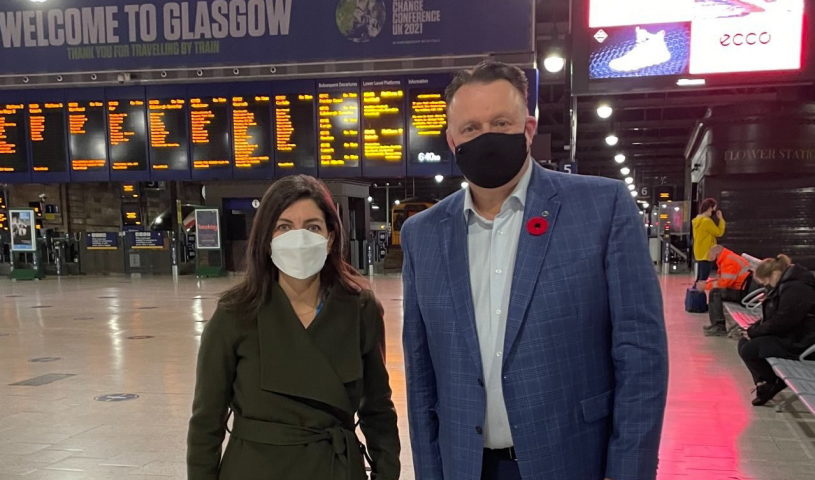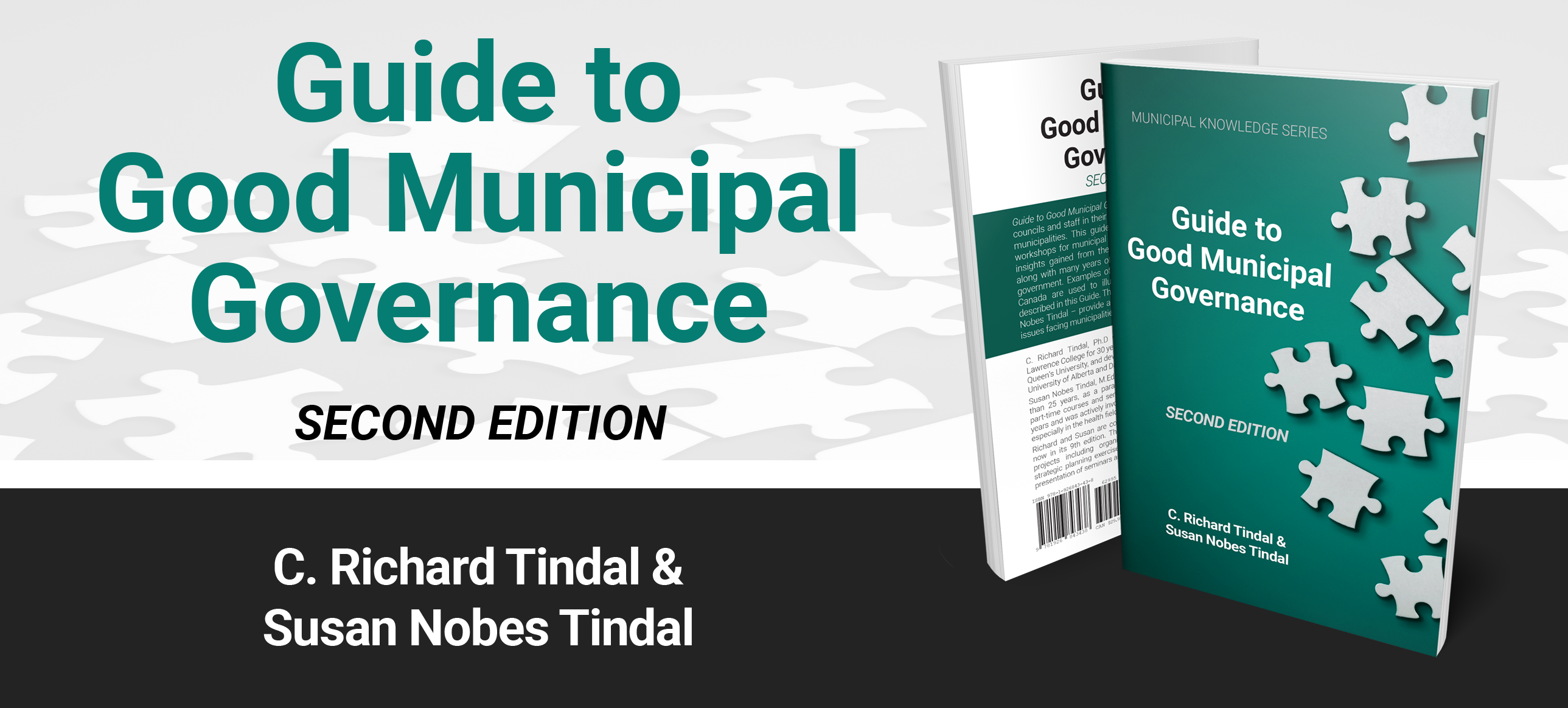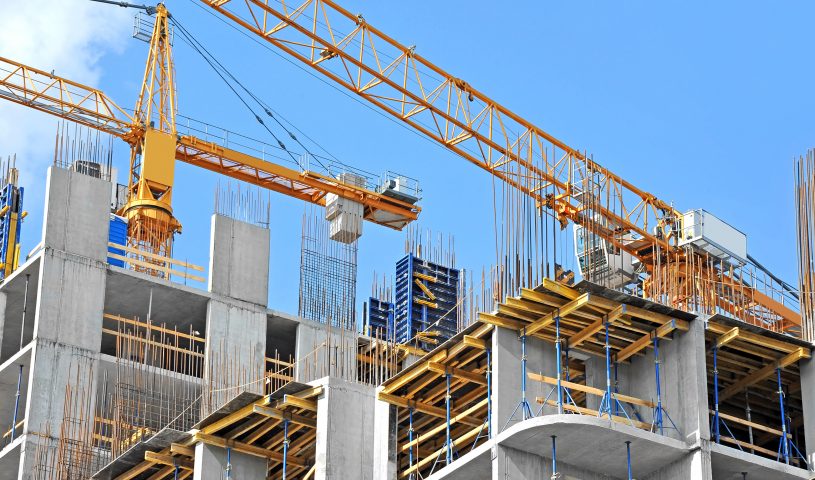Local governments driving the battle against climate change
 Municipal voices need to be heard: “Local governments have influence over a huge amount of the country’s greenhouse gas emissions. We create those emissions, and we want to be part of the solution,” Savage said. Above: FCM CEO Carole Saab and Halifax Mayor Mike Savage. Photo Credit: Federation of Canadian Municipalities
Municipal voices need to be heard: “Local governments have influence over a huge amount of the country’s greenhouse gas emissions. We create those emissions, and we want to be part of the solution,” Savage said. Above: FCM CEO Carole Saab and Halifax Mayor Mike Savage. Photo Credit: Federation of Canadian Municipalities
Local governments are leading the charge in the battle against climate change, but they need the tools that will help them succeed.
That was the message Canadian municipal leaders brought to the 2021 United Nations Climate Change Conference. More often referred to as COP26, the conference took place in Glasgow, Scotland from October 31 to November 13.
Municipal Climate Leadership
Among the COP26 participants were representatives from the Federation of Canadian Municipalities (FCM). This group included CEO Carole Saab and Halifax Mayor Mike Savage. Savage is also Chair of FCM’s Big City Mayors’ Caucus.
Strathroy-Caradoc Mayor Joanne Vanderheyden is also the current president of FCM. Vanderheyden said it was important that FCM had representation at the COP26 table.
“Local governments really have influenced over half of the country’s greenhouse gas [GHG] emissions, and we’re key to meeting Canada’s climate goals,” she said. “We play a critical role in the mission to meet those emission reduction targets that Canada has, and then set that pathway to net-zero by 2050.”
Savage agreed that it is important Canadian municipalities have a voice at conferences such as COP26. And FCM has had a strong presence at the conference over the years. That presence has included representation from the Big City Mayors’ Caucus. Savage took over as caucus chair after former Edmonton mayor Don Iveson announced his retirement.
While adding that he was happy to take part in COP26, Savage said that he was also eager to bring back a strong message for his colleagues across Canada.
“What FCM was looking for was to basically reinforce the message that local governments have influence over a huge amount of the country’s greenhouse gas emissions. We create those emissions, and we want to be part of the solution,” Savage said. “We’ve seen cities taking more and more of a leadership role in climate. We saw it after 2016, when (now former) President Trump said no to the Paris accord. But many mayors in the U.S. said ‘hang on a second, this is still our fight. We’re still going to be part of it.’ And, in Canada, you’ve seen municipal governments step up as well and say we’re going to be part of this.”
Proper Tools for Change
Savage said that he and his FCM colleagues, along with the rest of the Canadian contingent, spoke with many conference participants. This included some international non-governmental organizations (NGOs), along with other international mayors. The focus of these conversations was around how cities can take a lead on climate adaptation, mitigation, and adaptation.
There was considerable attention paid to how municipalities can build strong partnerships. The goal of these collaborations would be to collectively continue the work of addressing climate change.
But creating that change requires the proper tools.
Vanderheyden said that Ottawa’s Disaster Mitigation and Adaptation Fund is one essential tool. During the run up to the 2021 federal election, FCM pushed for adding funding to the program. The hope, she said, would be a further $2 billion over the next three years. She also said that municipalities need to update their regional climate modelling and natural hazard maps. These can be used to fund local vulnerability and risk assessments.
Vanderheyden said that the climate fight requires municipalities to integrate equity in these conversations. This means including a focus on both Indigenous knowledge and social infrastructure considerations.
That said, there are concrete things that communities can do right now. For example, municipalities can move forward with fleet electrification. They can also work toward installing solar panels on municipal buildings. Even the simplest changes, Vanderheyden said, can be impactful.
“It can be as simple as changing the window and moving forward from there. Anything that we do is on that pathway to getting to where we need to go. Putting charging stations in the community so people have the opportunity,” she said. “We need to have charging options in new homes. Those are the things that we can do on the frontline to move forward.”
Focus on Government Partnerships
Savage agreed that increased federal/provincial funding is one important tool. But it isn’t the only one. He added that local infrastructure needs to be updated or retrofitted. Also, transit and other fleets need to be electrified. Municipalities can also look at options such as hydrogen as well.
Local governments are going to take a lead in this fight, Savage said. But if they are, they’re going to have to have the support of the federal and provincial governments as well.
“I absolutely believe that the federal government is a willing partner on climate action. We saw a huge investment in the Green Municipal Fund from the feds recently … more than $1 billion to communities. That’s a lot of money,” Savage said. “And so, we want to be partners in this. We have done a lot of work on it. We have the Municipalities for Climate Innovation program. We’re not sitting back just saying maybe you can help us. We are outlining whereby the federal government and the provinces can align their climate objectives and work together to find solutions.”
Vanderheyden agreed that FCM is continuing to work on deepening federal and municipal coordination. The goal of that effort is to align national and local climate action. Also important is identifying opportunities to scale up those local solutions.
Climate challenges are being faced in communities both large and small. All communities, she added, are together in this climate fight. And while FCM is dealing with very different communities, the message doesn’t change.
“You can’t stop at the beginning; you need to get to the end. So, you have to continue to build on all of these things that you can do for your community moving forward,” Vanderheyden said. “We have amazing opportunity to do the things that have to happen. Now, you can’t be ready for every situation. I mean, things happen that you think ‘wow – what – where did that come from?’ But if you start, you will get there.”
New Timelines a Must
Savage said that he feels optimistic that municipalities can bring about change. The challenge is that the globally suggested deadlines for progress are moving closer all the time.
With that in mind, Savage said that local governments need to turn discussion into actual action. For example, in Halifax, the municipality has the goal of reaching net-zero by 2030 – well ahead of the 2050 date suggested by the UN.
On this point, Savage recalls a meeting where former New York City mayor Michael Bloomberg was speaking. The former candidate for the U.S. Democratic Presidential nomination was speaking to local government leaders when he said that any politician who talks about having meaningful progress by 2050 should be ignored. After all, they won’t be in office at that point. Or, quite possibly, not even alive.
And so, those climate deadlines need to be shortened – and soon.
“We have to make the objectives much quicker. We have to have plans to switch our transit and fleet plans on a much tighter timeline than that. We have to renovate our buildings. We need to make sure that we’re following the best, sustainable programs for new buildings,” Savage said. “As we densify the cities, we also have the opportunity to protect green spaces. And I think that’s all part of the climate plan that we have and need to have.” MW
✯ Municipal World Insider and Executive Members: You might also be interested in Christopher Chen and Jennifer Court’s article: Time to act.
Sean Meyer is Senior Content Editor for Municipal World.
Related resource materials:



